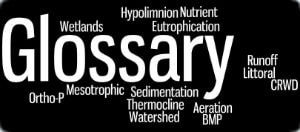|
Agricultural runoff is a significant source of polluting nutrients to waters of the CRWD. This project seeks to lessen this source of pollution by assisting farmers with changing the fertilizer application rates for their fields.
Many farmers apply fertilizers to their fields at standard rates, even though field fertilizer requirements vary significantly. By testing the soil throughout a given field to determine fertilizer requirements, the farmer can apply the fertilizer at variable rates throughout a field. This optimization of fertilizer application results in improve yields and operational cost controls for the farmer, and lowers the potential for nutrient runoff from fields to District waters. This practice is known as precision soil testing and GPS-aided fertilizer application. After a successful pilot phase (known as the Fertilizer Field Trial), this project received a grant in the amount of $300,000 from the Minnesota Pollution Control Agency through a grant from the United States Environmental Protection Agency, Section 319 Nonpoint Source Management Fund for the enrollment of 16,000 acres into this systematic soil testing program. The project was completed early fall 2016. Results of Project
Press Releases
"Trickle down water benefits" - Annandale Advocate February 1st, 2017 article
September 26th, 2016 - Targeted Fertilizer Project Successful- Water Quality Protected, Farmers' Yield Optimized December 15th, 2014 - Farmers and Water Quality Win: Clearwater River Watershed District Receives Minnesota Association of Watershed Districts' Program of the Year Award June 5th, 2014 - A Rare Win for Lake, Streams and Farmers: Clearwater River Watershed District Honored at Environmental Initiative Award Ceremony for Targeted Fertilizer Project Project Documents
Targeted Fertilizer Application Reduction Project Final Report
2015 Presentation to Minnesota Division of the Izaak Walton League of America- "Targeted Fertilizer Application Reduction Program: A Unique Partnership Benefitting Water Quality & Agricultural Production" October 2012 Targeted Fertilizer Brochure - Program Enrollment April 2011 Brochure - Fertilizer Field Trial Results |
- About
-
Projects
- Carp Management 2023-2024
-
Clearwater River Chain of Lakes (1980) Restoration Project
>
- Annandale Wetland Treatment System
- Kingston Wetland Feasibility Study and Restoration Project
- Lake Augusta Aeration Project
- Lake Augusta Erosion Control Project
- 1980 Monitoring Program
- Non-Point Source Pollution Abatement (TCCP) Project
- Upper Lakes Aeration and Mechanical Fish Removal
- Watkins Wetland Isolation Project
- Watkins Wetland Treatment System
- Replacement Projects for Aerators
-
Total Maximum Daily Load (TMDL) Implementation Projects
>
- Alternative Tile Intake Project
- Clearwater River Channel Stabilization (CCM Riparian) Project
- Clearwater River Restoration & Protection Phase II Project
- City of Kimball Stormwater Treatment Phase II
- Targeted Fertilizer Application Reduction Project
- Watkins Area Stormwater Treatment Project
- Willow Creek (Kimball Phase I) Stormwater Retention / Reuse Project
- Potential Future Implementation Projects
- Bass Lake AIS Management
- Clear Lake North V-Notch Weir
- Clear Lake South Notch Weir
- Clear Lake IESF
- Cedar Albion Swartout Henshaw Project #06-1 >
- Clearwater Lake Milfoil Treatment
- CRWD Bog Control Projects
- Communal Sanitary Sewer Systems >
- Lake Augusta Aquatic Invasive Species (AIS) Project
- Lakes Louisa & Marie Aquatic Invasive Species (AIS) Project
- Norton Avenue Basin
- Ostmark Basin
- Pleasant Lake Outlet Control Structure
- Cedar Lake Aquatic Invasive Species (AIS) Project
- School Section Lake Outlet Control Structure
- Wastewater Treatment Task Force
- Programs
- Resource Library
- How You Can Help
- Contact
|
This page is maintained by CRWD Board Managers.
© Copyright 2020 |
Board Meetings
Third Wednesday of the month at 6pm Special and emergency meetings may be called. Such meetings will be properly notice per MN Statutes. |
Clearwater River Watershed District
93 Oak Avenue South, Suite 5 Annandale, MN 55302 Mailing Address:
3235 Fernbrook Ln N Minneapolis, MN 55447 |
Website created by Skol Marketing



